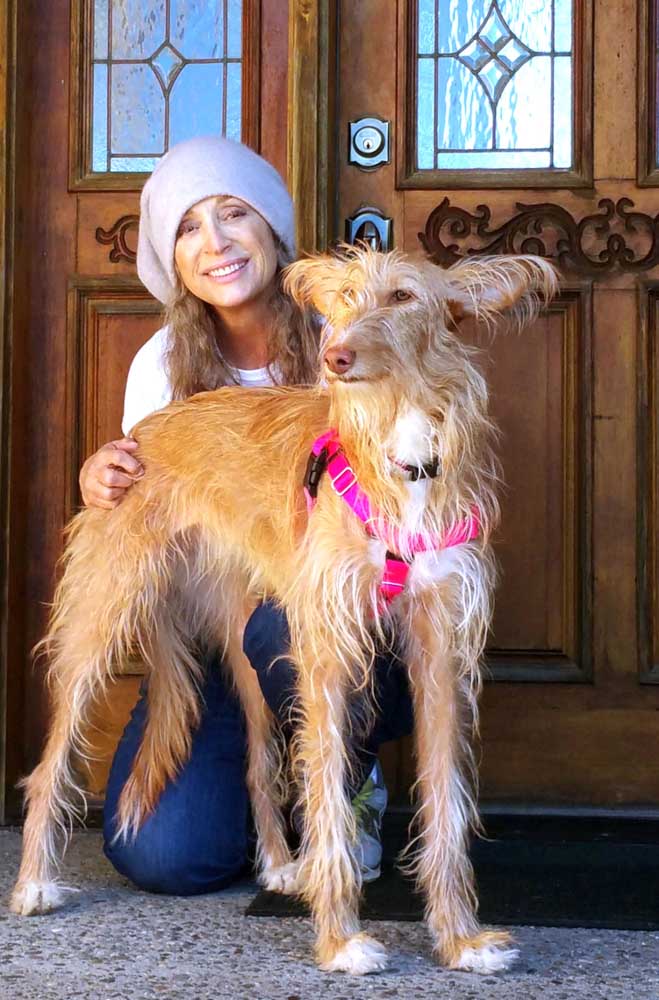Canine Corner: Understanding a dog’s aggressive behavior
Published 9:03 am Wednesday, September 25, 2019

- Rain Jordan of Expert Canine with Dahlia.
I have, in other essays, bemoaned the bizarre expectations of us humans that our dogs should somehow understand and follow our human rules and mores as if they were human. Especially given how the human species rails against anthropomorphism — e.g., “dogs are not children!” is a common chide — you’d think we’d be more open to respecting the differences between dogs and humans.
In “The Culture Clash,” renowned dog training expert and educator Jean Donaldson presents the plight of our companion canines, and our own plight. The first edition of her book was released in 1996 and though it is still popular, the underlying problem she presents in it persists. We haven’t properly adjusted for thumblessness.
Trending
Since they don’t have texting — no thumbs! — dogs settle disputes with a variety of threat displays and sometimes biting. In the dog world, these disputes are often minor and soon forgotten. We humans take threats and physical altercations seriously. Perhaps we partake in projection. The result, says Donaldson: “There is incredible stigma attached to dogs that bite, as though they have character flaws and are qualitatively different from dogs who have never bitten. They are not. There are not two kinds of dogs: nice dogs who would never bite and less nice dogs who do. Biting is natural, normal dog behavior.”
Don’t panic. This does not mean dogs are readying to bite you. It simply means that dogs have limited options for protecting themselves from threats. No thumbs means no tool use — no self-defense weapon-carrying dogs — and being captive animals means no ability to flee from threats. They are at our mercy. As I’ve covered previously, and as Donaldson’s book explains, that means we who are responsible for dogs must properly breed, socialize, manage, handle, train, desensitize, care for, and protect them from feeling and being threatened so that they don’t have to protect themselves.
Explaining how our dogs may be set up for doom if we expect them to protect us from danger yet not be dangerous to us — attacking robbers and muggers but not our family or friends—Donaldson suggests how our dog mythology disadvantages our dogs: “The mythical dog is one who can tell the good guys from the bad guys,” explaining what would be obvious, both in fact and in consequence, once we stopped to analyze it. “Dogs are unaware that they’ve been adopted into a culture where biting is considered a betrayal of trust and a capital offense. Incredibly little is actively, consciously done to reduce the probability of biting.” By this she means aggression prevention training, which a good R+ trainer/certified canine behavior consultant can provide. This is important, Donaldson explains, because we hold “an absurd ideal” that there should be “no bites, ever.” Since dogs are animals—albeit really great animals—and biting is normal for animals, says Donaldson, if we are going to hold them to a set of standards that is absurd and abnormal for the species, it is our responsibility to ensure they are gifted the skills and support needed to succeed.
There’s confusion about dog “bites” and “maulings”; this article is not meant to address serious occurrences where death or mutilation have resulted. Donaldson distinguishes between those versus bites that are more akin to “kitchen injury” level bites or less, explaining that often “no effort is made to distinguish dogs involved in fatal and near fatal maulings from kitchen injury level biters. In human terms, this is exactly akin to lumping sharp words with felony assault and murder.” I know some of you have been through great emotional trauma related to this topic. I’ve been through it in the past, and I understand that this last point may be a lot for some people to hear. But please stay with me if you are a dog lover.
I suppose I am lucky that my dogs are meek and gentle. I am also ever-cautious to protect them from situations that might put them at risk of having to defend themselves from a charging dog or an aggressive person — or one who doesn’t understand dog behavior and subtle provocations. But there are no guarantees. I suspect this might be why Donaldson decided to go brave or go home in her book, hoping to increase understanding and motivation in dog lovers all over the world, so that we might improve our skills and therefore our capacity to protect our beloved best-friend species:
“Aggressive behavior does not fracture relationships in dog society,” she writes. “The problem is that aggression often changes things a great deal in dog-human relationships. We routinely execute dogs who bite. That’s quite the culture clash. … I say execute rather than euthanize because a biting dog is not suffering and does not need or want a merciful death. He is killed because of transgressions he has committed against humans. That’s what an execution is for.”






